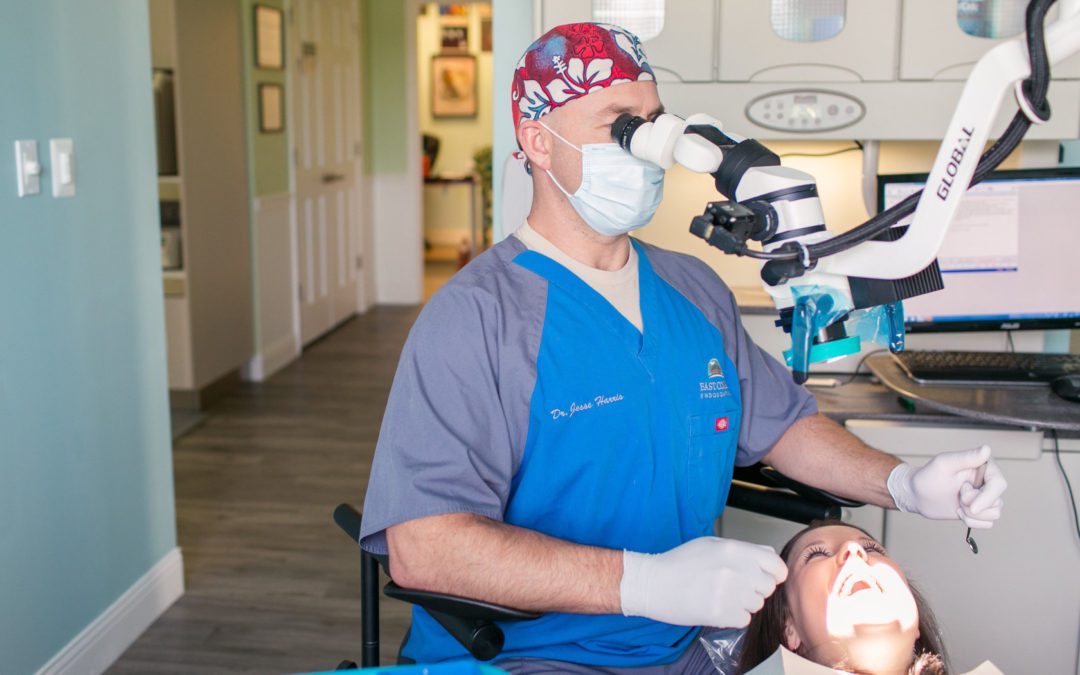The fact is, root canals may have been painful a long, long time ago but advancements in medical technology have made them essentially painless in the modern day. Even the healing process is pain-free, thanks to a number of modern factors.
Here are all the ways pain is treated or managed during and after a root canal:
Dental Anesthetic
Before performing a root canal or other endodontic treatment, endodontists apply local anesthesia to the treatment area. This is usually lidocaine or procaine, which act almost instantaneously to numb the area yet leave the body relatively quickly, after just a few hours.
In the past, dentists used different kinds of anesthesia that didn’t always work as well, and their effectiveness and half-lives were less clearly understood. Nowadays, root canal patients don’t have to worry about the effects of their anesthesia wearing off in the middle of their treatment but in the past, that may not have always been the case. This alone is likely to have contributed to the idea that root canals are painful.
Anti-inflammatory Medication
After a root canal, patients typically take some kind of anti-inflammatory medication, like ibuprofen. This keeps the swelling down and therefore reduces any pain or discomfort that would otherwise be caused by swelling.
Though there have long been remedies for pain and swelling, NSAIDs (nonsteroidal anti-inflammatory drugs) like aspirin and ibuprofen are relatively new. Thanks to these pain relievers, root canal patients can safely keep their post-treatment pain at bay without disconcerting, adverse side effects.
Antibiotics
Before antibiotics, the odds of getting infections after surgeries were very high and the medical world was ill-equipped to treat them. Uncontrolled infections could spread to other parts of the body and doctors could do little more than watch and pray.
Nowadays, thanks to antibiotics, it’s much less likely to get an infection during or after a root canal, even though root canals are often recommended because there is already an infection in the tooth. The healing process usually goes smoothly, with the patient back to normal life after just a few weeks, but in the event that the root canal does become infected, it can be treated and resolved with antibiotics in just a few days.
Oral Hygiene
Thanks to improvements in oral hygiene, there are fewer infections and abcesses to require root canals in the first place. Plus, better cleaning after a root canal means a lower chance of infection and a higher likelihood that the healing process will go smoothly. Even though a modern root canal doesn’t hurt, it’s best to brush and floss every day to help avoid them entirely. Contact Dr. Jesse Harris and his team at East Coast Endodontics to learn more.

About the Author
Dr. Harris has been a practicing dentist since 2005. In 2012, he received his Master’s of Science in Dentistry and a certificate in Endodontics. He founded East Coast Endodontics shortly after receiving his master’s degree. He also currently holds a part-time position as a Clinical Assistant Professor for the Endodontics department at Virginia Commonwealth University. View his full bio.

